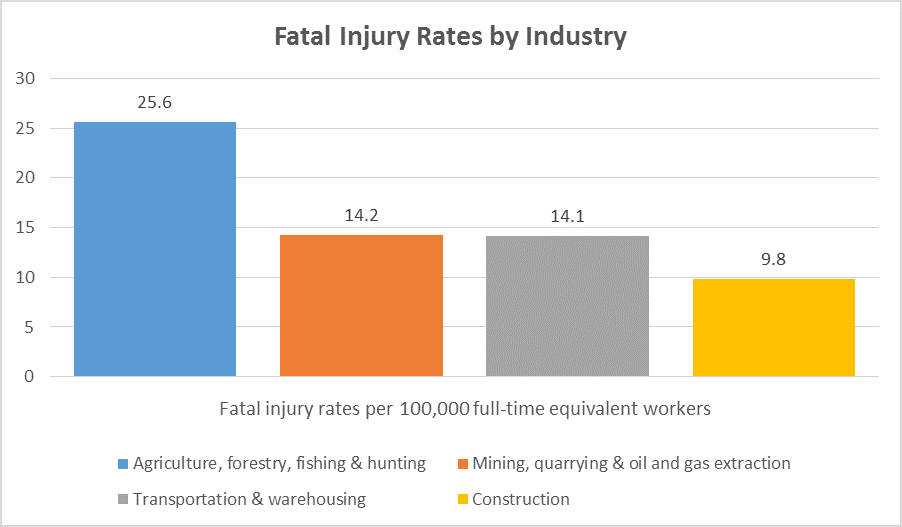What Are the Deadliest Jobs in Construction?
The construction industry continues to hold the top spot on a list that it isn’t proud of—total annual worker deaths. According to the Bureau of Labor Statistics’ revised Census of Fatal Occupational Injuries, there 4,821 fatal occupational injuries in the U.S. in 2014. (Note: This is the most recent year for which data is available.) In the construction industry there were 899 worker deaths, which is about 18.65% of total fatal work injuries. This is the largest number of construction worker deaths since 2008.
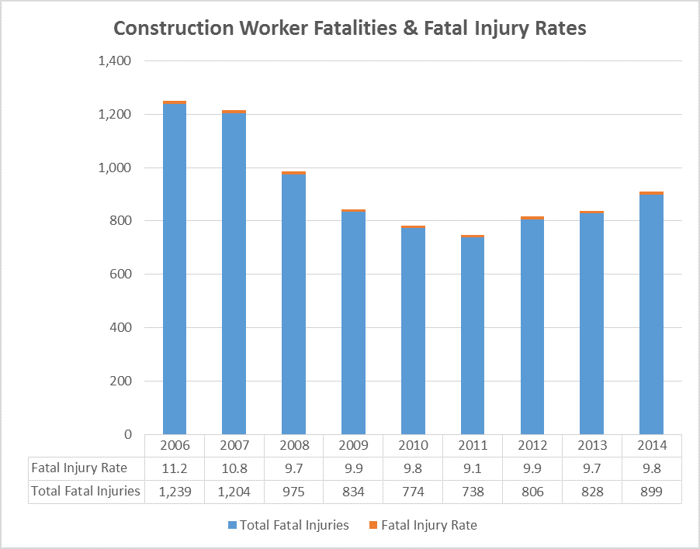
The construction industry had an 8.6% increase in worker deaths from the 828 in 2013. The fatal injury rate for construction increased from 9.7 per 100,000 full-time equivalent (FTE) workers in 2013 to 9.8 in 2014. The rate for all fatal occupational injuries rose to 3.4 workers in 2014 from 3.3 in 2013.
While the construction industry accounts for the most worker deaths out of all industries, it does not have the highest fatal injury rate. The industry with the highest fatal injury rate was agriculture, forestry, fishing and hunting (25.6) with 584 fatal work injuries in 2014. Mining, quarrying and oil and gas extraction (14.2) and transportation and warehousing (14.1) were next with 183 and 766 worker fatalities in 2014, respectively.
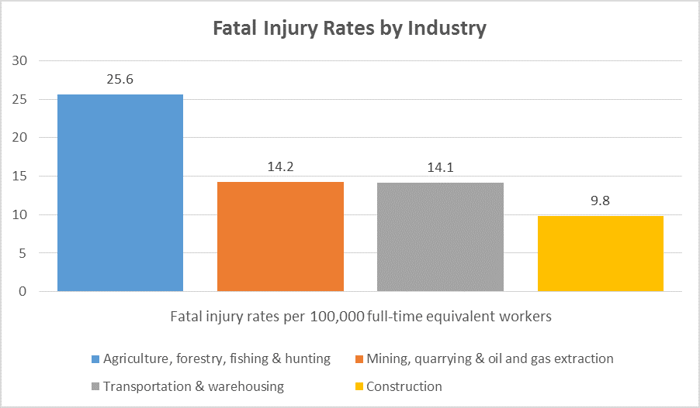
Falls, slips and trips are the leading cause of construction worker deaths. They led to 359 deaths in construction, or 40% of all construction worker deaths. Other events that led to a high number of construction worker fatalities include transportation incidents (244), exposure to harmful substances or environments (122) and contact with objects or equipment (114).
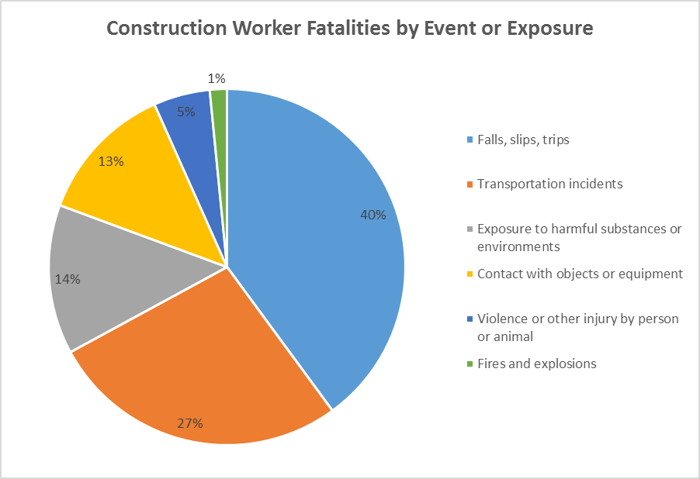
Based on the leading cause of construction worker deaths, it’s easy to see why roofers have the highest fatal injury rate at 47.4 per 100,000 FTE workers. This is an increase from the 2013 rate of 40.5 and an increase in total deaths from 72 to 83. It shouldn’t be surprising that failure to have fall protection is the most cited OSHA violation in construction. The 47.4 fatal injury rate for roofers makes it the fourth deadliest job among all workers.
The Five Deadliest Jobs in 2014:
- Logging workers - 110.9 fatal injuries per 100,000 FTE workers
- Fishers and related fishing workers - 80.8 fatal injuries per 100,000 FTE workers
- Aircraft pilot and flight engineers - 64.0 fatal injuries per 100,000 FTE workers
- Roofers - 47.4 fatal injuries per 100,000 FTE workers
- Refuse and recyclable material collectors - 35.8 fatal injuries per 100,000 FTE workers
Structural iron and steel workers in construction have a high fatal injury rate at 25.2, despite accounting for only 15 worker deaths. Other occupations in construction with high fatal injury rates include construction laborers (208 deaths) at 16.9 and first-line supervisors of construction trades and extraction workers (130 deaths) at 17.9.
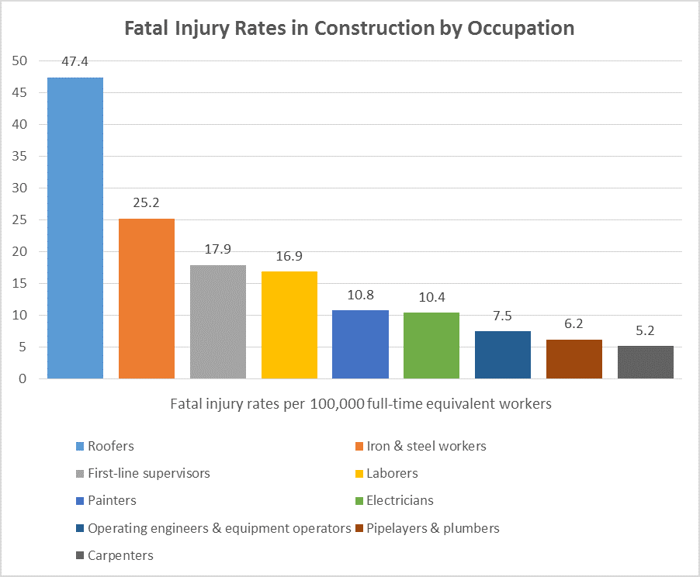
Occupations in construction that saw an increase in fatal worker injuries from 2013 to 2014 include electricians going from 8.5 to 10.4, painters going from 9.4 to 10.8, operating engineers and construction equipment operators increasing from 6.7 to 7.5. Not all occupations in construction saw increases in their fatal injury rates. The fatality rate for carpenters decreased from 6.9 to 5.2, pipelayers and plumbers dropped from 7.3 to 6.2 and construction laborers went down from 18.1 to 16.9.
The total number of construction worker deaths have been on the rise the last few years. Part of this can be attributed to the fact that construction employment has increased as the industry recovered from the recession. The fatal injury rate hasn’t changed that much. It was 9.9 in 2012, 9.7 in 2013 and 9.8 in 2014. That being said, the industry needs to be doing a better job of creating and promoting a safe work environment and improving construction worker safety in order to reduce these numbers.
